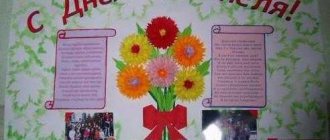| International Mother Language Day 2022: | February 21, Monday |
On February 21, the world celebrates International Mother Language Day. Now on our planet there are from 2 to 3.5 thousand nationalities, each of which has different traditions, folklore, mentality and language. The linguistic basis reflects the cultural heritage of the people. Of the 7 thousand existing dialects and dialects, they are teetering on the verge of extinction, of which 136 are in Russia. In addition, humanity destroys, littering the remaining words with parasites, obscene language, slang and incomprehensible vocabulary. Mother Language Day was created to call attention to these problems and protect the diversity of existing dialects.
The history of the holiday
The prerequisite for the creation of the official date was the tragedy at the Bangladesh University in Dhaka in 1952. Students protesting against Urdu held a rally to recognize Bengali as the state language. The authorities not only did not listen to the requests of the young people, but also opened fire, as a result of which 4 students died. The situation received significant public outcry along with other popular unrest and protests; government bodies had to recognize the Bengali language at the legislative level.
Such a struggle was worthy of UNESCO, as the authorized UN division for culture, science and education, establishing the International Mother Language Day, which has been celebrated by the whole world since 2000.
In addition to the general linguistic day, in 2010 the UN approved the days of 6 of its official languages - Spanish, English, Russian, Arabic, French, Chinese, for each of which a specific date is set.
Statistics
According to the international non-profit organization SIL International, there are currently over 7 thousand languages in the world. Of these, approximately 32% are in Asia, 30% in Africa, 19% in the Pacific region, 15% in the Americas and 4% in Europe. Of the total number of languages, only 560 are actively used in the public sphere and in the education system.
The 40 most common languages are spoken by approximately two-thirds of the world's population. The most commonly used ones are Chinese, English, Russian, Hindi, Spanish, Portuguese, French and Arabic. According to various estimates, from 240 to 260 million people in the world speak Russian. 2007, declared the Year of the Russian Language in Russia, was celebrated in 76 countries.
How the date is celebrated around the world
International Mother Language Day is a holiday celebrated by a large circle of people - students, teachers, teachers of higher and secondary vocational schools, linguists, philologists, library specialists and just people who are especially close to this topic.
It is logical that on this day events are dedicated to protecting and demonstrating the importance of speech:
- thematic exhibitions,
- lectures, seminars on the richness and significance of speech,
- concerts, educational events.
Television and the media are full of news stories and articles of a linguistic nature, and feature films are broadcast. This is done with one goal - to attract public attention to existing language issues.
Endangered languages
In 1996, UNESCO first published the Atlas of the World's Languages in Danger (reprinted in 2001 and 2010 with the support of the Norwegian government) to attract the attention of the public and governments of different countries to the problem of preserving linguistic diversity. The latest version of the atlas lists about 2,500 languages (in 2001, this figure was almost three times less - 900 languages), the viability of which is assessed from “vulnerable” to “extinct” (230 languages are listed that have disappeared since 1950).
The languages of small nations are primarily at risk of extinction. Thus, in the United States, out of several hundred Indian languages spoken by local residents before the arrival of Europeans, less than 150 have survived. In Central and South America, most Indian languages have disappeared, and the remaining ones are being replaced by Spanish and Portuguese. The preservation of rare languages is complicated if the authorities limit their use in schools, in the state administration, and in the media. UNESCO estimates that a language is endangered or seriously endangered if fewer than 70% of children learn it or if it is spoken by only a small number of older generations. It is believed that in order to preserve a language, it is necessary that at least 100 thousand people speak it.
According to the latest edition of the UNESCO atlas, 16 languages are recognized as extinct in Russia. Thus, in 2003, the last speaker of Babinsky Sami (Magadan region) died, Ubykh (Krasnodar Territory), South Mansi and West Mansi languages disappeared. 20 languages are recognized as vulnerable, including Adyghe (300 thousand native speakers), Tuvan (242 thousand), Buryat (125 thousand). Among the languages on the verge of extinction is Votic, which survives in only two villages in the Leningrad region on the border with Estonia. According to the 2010 Russian census, at that time 68 people owned it. In November 2015, employees of the Institute of Linguistics of the Russian Academy of Sciences noted that no one speaks Votic in everyday life. In total, the atlas lists 136 endangered languages in Russia.
Measures to preserve languages
Efforts are being made in many countries to preserve dying languages. Thus, with the assistance of UNESCO, the endangered Jeju language is supported in the Republic of Korea (in 2010, it was used by 5 to 10 thousand people, mostly elderly), an environmental encyclopedia in the local Marovo language is being developed in the Solomon Islands, and work is being done in Nicaragua to preserve the Mayangna language. In Great Britain, in recent years, residents of the Isle of Man (in the Irish Sea) have again begun to study the Manx language, the last speaker of which died in 1974, and in the county of Cornwall the Cornish language is being successfully revived (a movement for its restoration arose at the beginning of the 20th century). In the village of Yona on the Kola Peninsula, they are trying to restore the Babin Sami language - a grammar has been published, there are audio recordings. There is evidence that in recent years interest in the Votic language among young people has increased. For example, ethnic holidays are organized during which songs are sung in this language.
The most famous example of a revived language is Hebrew (considered only a book language during the 18th centuries, in the 20th century it became the language of everyday communication and the official language of Israel).
Why do languages disappear?
It is believed that the language will be preserved as long as at least 100 thousand people use it to communicate. The fewer people who are native speakers of a language, the more difficult it is to preserve it.
Any living language of communication is dynamic. It is constantly evolving, updated with terms, and updated with updated rules and regulations. Unfortunately, like all living things, the language of communication can die. Many languages have disappeared from the face of the planet forever, and scientists have been struggling for years to decipher the surviving documents compiled in languages unknown to modern people.
That is, the emergence, development and even death of a language of communication is, in general, a natural process. However, the oblivion of languages has never passed as quickly as it happened in the last century.
Thus, according to statistics, at the beginning of the century there were 193 national languages in Russia. And by the end of the century there were only four dozen of them left. That is, in just a hundred years, more than one and a half hundred national languages have disappeared from the face of the planet. And this is only on the territory of the former USSR.
It is clear that with the advent of modern means of communication and communications, it is becoming increasingly difficult for small nations to achieve recognition of their national languages. Today, only languages used on the Internet are considered in demand. The holiday was created to emphasize the importance of preserving the languages of small nationalities.
English is considered the dominant language in the world today, although in terms of the number of speakers it will probably soon overtake Chinese. Although English will most likely retain its leading position on the Internet for a long time. According to statistics, the English-language segment occupies 81% of the worldwide network. All other languages occupy a very small percentage. For example, the German-language segment makes up only 2% of the world wide web space.
How is it celebrated?
The day dedicated to the native language is recognized internationally; it is widely celebrated in different places around the world. Of course, over the years of the existence of the holiday, each country has developed its own traditions of celebration.
In most countries, events in honor of the holiday are educational in nature. Various seminars, public events, and practical classes are held. Moreover, these classes, as a rule, take place in a fun, playful way. Pictures, educational games and other entertainment allow people to get acquainted with the basics of other national languages.
UNESCO has organized a special portal on the Internet to help national minorities whose languages are in danger of disappearing. This resource allows you to study the languages of different nationalities, that is, gain access to knowledge of other cultures.
The key to maintaining peace and mutual understanding is respect for the traditions and culture of other peoples. Each national language is a kind of mirror reflecting the mentality of the people. After all, the language of communication acquired from infancy shapes a person’s national self-awareness.
The desire to understand and experience the culture of other nationalities is a commendable phenomenon. And nothing helps to understand another people more fully than studying their language. Therefore, the desire to learn other languages is the key to understanding the diversity of our world.
Despite the general understanding of the need to preserve all national cultures, the situation remains difficult. For example, one of the most multilingual countries today is India. In this densely populated country, there are more than one and a half thousand different languages and dialects. But small languages are in dire straits, as they are gradually being replaced by English, which is the language of international communication in India. Fewer and fewer people consider it necessary to teach their children national languages, which is why there are fewer and fewer native speakers every year.
However, efforts are being made to preserve the national languages. In many schools, learning the native language is considered a compulsory subject. Multilingualism is also encouraged when recruiting for public service.
Documentation
Several international instruments contain provisions related to language preservation issues. These include the UN International Covenant on Civil and Political Rights (1966), the UN Declaration on the Rights of Persons Belonging to National or Ethnic, Religious and Linguistic Minorities and the Rights of Indigenous Peoples (1992 and 2007), the UNESCO Convention against Discrimination in field of education (1960), on the protection of intangible cultural heritage (2003), on the protection and promotion of cultural expressions (2005).
The year 2008 was proclaimed by the UN General Assembly as the International Year of Languages. 2010 was declared the International Year for the Rapprochement of Cultures.
Who's celebrating?
Without a doubt, the holiday of language is celebrated by people who study it: teachers of languages and literature, scientists in the field of ancient and modern writing, library workers, teachers of philology departments, students of specialized universities and simply people who are passionate about linguistics.
Our country is no exception and celebrates Language Day, like the whole world. In addition to people involved in teaching and learning languages, schoolchildren are also involved - they conduct open lessons on the Russian language and literary reading, competitions and olympiads, as well as lectures on other languages living in a particular area.
Interesting Facts
In our multinational country there are also endangered languages; UNESCO provides data on 136 that are on the verge of extinction. In addition to extinction, many languages are characterized by pollution, which is facilitated by the media and the foreign words, slangs, profanity and criminal language used in them.
That is why it is so important that more and more people are involved in the celebration of International Language Day; people do not stand aside and are happy to take part in conferences, dictations and help preserve the culture of their native language.










